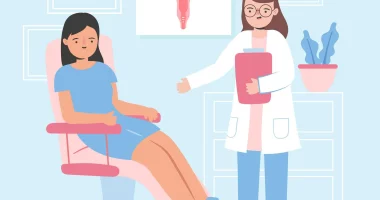Botulism is a severe sickness caused by a toxin made by the bacterium Clostridium botulinum. This toxin can paralyze muscles, starting with the face and spreading to the arms and legs. If it affects the muscles used for breathing, it can lead to difficulty breathing or even respiratory failure.
Botulism is always treated as a medical emergency because it can cause paralysis in all its forms.
In the past, botulism was often deadly, but now antitoxins have greatly improved the chances of recovery.
In a 2015 study, the largest botulism outbreak in the United States in 40 years occurred. It was found that the problem started with potatoes that were not canned properly and were shared at a potluck meal.
Symptoms
Food-borne botulism causes symptoms like diarrhea, vomiting, nausea also constipation, and a swollen belly. Weakness and trouble breathing can also occur. Symptoms usually start 18 to 36 hours after eating contaminated food, but this can range from 3 hours to 8 days.
In wound botulism, symptoms begin with problems in the cranial nerves, which link the brain to the spine. This spreads throughout the body. It takes from 4 days to 14 days after exposure for symptoms to appear.
Adults with food-borne or wound botulism show similar neurological symptoms. These include double or blurry vision, drooping eyelids, weak facial muscles, dry mouth, trouble swallowing, and slurred speech. Muscles gradually become weak.
As paralysis develops, the breathing muscles can stop working without treatment, leading to breathing problems and possibly death. Patients remain conscious during this process.
Infant botulism shows different signs, like constipation, feeding difficulties, irritability, excessive drooling, droopy eyelids, a flat expression, and weak muscles. Breathing problems, weak crying, limpness, and a lack of reflexes are also common. Symptoms usually appear between 3 days to 4 weeks after exposure.
Causes
Botulism is caused by a toxin made by a bacterium called Clostridium botulinum. This bacterium is commonly found in soil and untreated water. It can live in these environments as a tough spore.
When conditions are right, Clostridium botulinum spores can grow and produce toxins in poorly preserved or canned foods. Even small amounts of this toxin can cause serious illness if consumed.
The following are the botulism types:
- Foodborne botulism: This occurs when people eat foods contaminated with the botulinum bacterium.
- Wound botulism: This type can happen when the bacterium enters an open injury and makes toxins there. People who inject drugs are at risk for this form.
- Infant botulism: Infants can get botulism when they swallow C. botulinum spores, which then grow and produce toxins in their intestines. In the U.S., this mostly happens from consuming corn syrup or honey, which can contain the bacterium. Sometimes, the bacterium is naturally found in infant stool.
- Adult intestinal colonization: This is an uncommon form where C. botulinum settles in the digestive tract of adults.
- Iatrogenic botulism: This form may occur if someone gets too much botulinum toxin, such as through medical treatments like botox injections. Cases of iatrogenic botulism have been reported after the therapeutic use of botox.
Prevention
To lower the chance of wound botulism, it’s important for people to get immediate medical help for any wounds and avoid taking street drugs.
For food safety, following these steps is crucial:
- Consume good food that is hygienic and clean
- Follow instructions attentively when tinning food at home, or avoid home tinning altogether.
- Boil some food like home-processed for almost 10 minutes before consuming, even if it seems fine.
- Do not eat canned foods if they look leaking, bulging, or damaged—discard them.
- Keep baked potatoes in foil until they’re eaten.
- Don’t give corn syrup or honey to infants under one year old.
- Refrigerate oils infused with garlic or herbs.
Boiling can eliminate the active form of the bacterium and its toxin. However, to kill the spore form needs heating to in any case 248 degrees Fahrenheit (120 degrees Celsius) in the pressure for in any case 30 minutes in a pressure cooker or an autoclave. Spores are tough and can survive normal boiling for hours, so high temperatures like those in commercial canning are needed to kill them.
The World Health Organization emphasizes these “Five keys to safer food”:
- Keep things clean.
- Separate cooked and raw foods.
- Cook food thoroughly.
- Keep food at the correct temperatures.
- Use safe water and ingredients.
These practices are especially important when traveling, particularly to places with limited access to clean water, good hygiene, and refrigeration.
Botulism cannot always be prevented because the toxin can still be present in household dust even after cleaning and sanitation. Parents should watch for signs of illness in children and take quick action if needed.
Sources of food
Botulism can be found most often in certain types of food. These include home-canned vegetables, cured pork, and ham. Additionally, smoked or raw fish, corn syrup and honey are common sources of contamination. For instance, aquatic game from Alaska or fermented fish and home-canned foods can contain the toxin.
It’s important to note that botulism typically does not develop in acidic foods with a pH level of 4.5 or lower. This acidic environment prevents the growth of the bacterium that produces the toxin.
Diagnosis
Diagnosis of botulism varies depending on the type and symptoms present
For infant botulism, diagnosis is confirmed by testing enema or stool samples. If botulism is suspected, immediate treatment with anti-toxin should start, even before test results are available. Other conditions like myasthenia gravis, stroke, or Guillain-Barre syndrome can have similar symptoms, so tests are crucial to rule these out.
Diagnostic tests may involve a brain scan, examining cerebrospinal fluid, electromyography, or an edrophonium chloride test.
If the toxin is found in the stomach, food, feces, vomit, or intestinal samples, a definite diagnosis can be created. In severe cases, the toxin might also be detectable in the blood. Early diagnosis is critical for effective treatment.
Treatment
Treatment for botulism involves hospitalization and specific interventions depending on the type and severity of the illness.
Infants diagnosed with botulism will receive Botulism Immune Globulin Intravenous-Human (BabyBIG or BIG-V). This treatment helps neutralize the botulinum toxin.
Patients experiencing respiratory difficulties may require a ventilator to assist with breathing. In severe cases, this can be necessary for weeks or even months, along with intensive nursing care. With time, the paralysis can improve.
Doctors will administer antitoxin injections immediately if botulism is suspected, even before test results confirm the diagnosis.
For cases caused by wounds, surgical treatment is necessary. This involves removing affected tissue over the wound, a procedure called debridement. The healthcare providers also suggest antibiotics reduce additional infections. Early and appropriate medical care is crucial to improve outcomes for botulism patients.
Complications
In most cases, infant botulism does not lead to long-term problems. As stated by the NIH, less than 1% of infant cases in the United States are caused by death. Around 50 years ago, 50% of the people with botulism became fatal, compared to between 3% to 5% today.
Botulism can lead to breathing problems that may cause death. People with severe symptoms might require a machine to help them breathe and sometimes intense medical care for some months. Extreme tiredness and difficulty breathing may last for many years.
Other sicknesses might grow as an outcome of the person’s condition, and these can sometimes be fatal.
An individual who has paralysis from botulism might recover with the assistance of antitoxins, which are antibodies that can deactivate the toxin. However, antitoxins cannot reverse paralysis that has already happened. Early treatment is important for the best chance of recovery.
Summary
Botulism is a serious illness caused by a toxin produced by Clostridium botulinum bacteria. It can lead to paralysis, starting in the face and spreading to limbs, potentially causing respiratory failure. Prevention includes safe food practices and prompt wound care.
Diagnosis involves tests like stool analysis and immediate treatment with antitoxins. Treatment includes hospitalization, ventilator support for severe cases, and sometimes surgical intervention for wound-related botulism. Complications can include long-term fatigue and respiratory issues, but early intervention with antitoxins improves outcomes.









